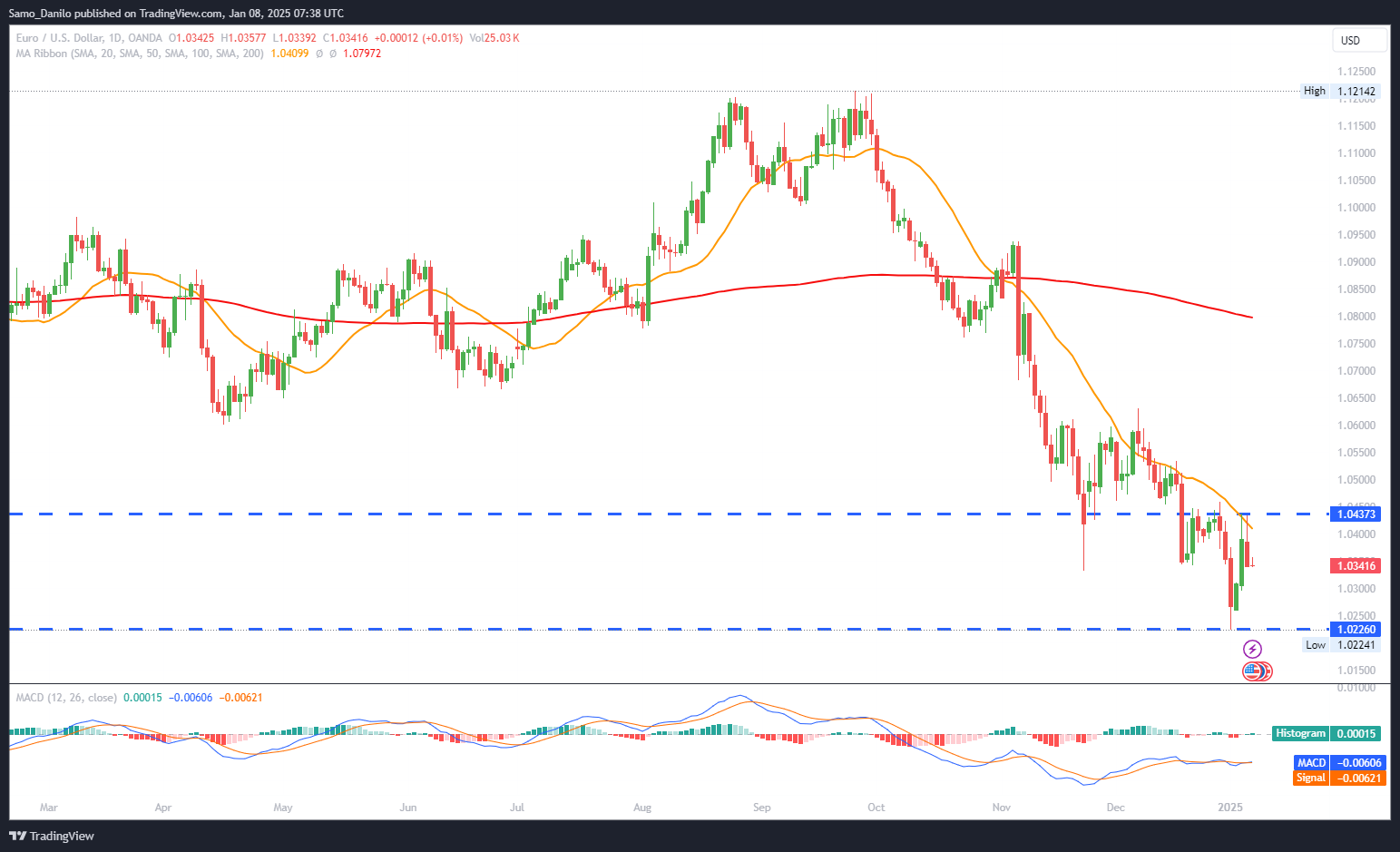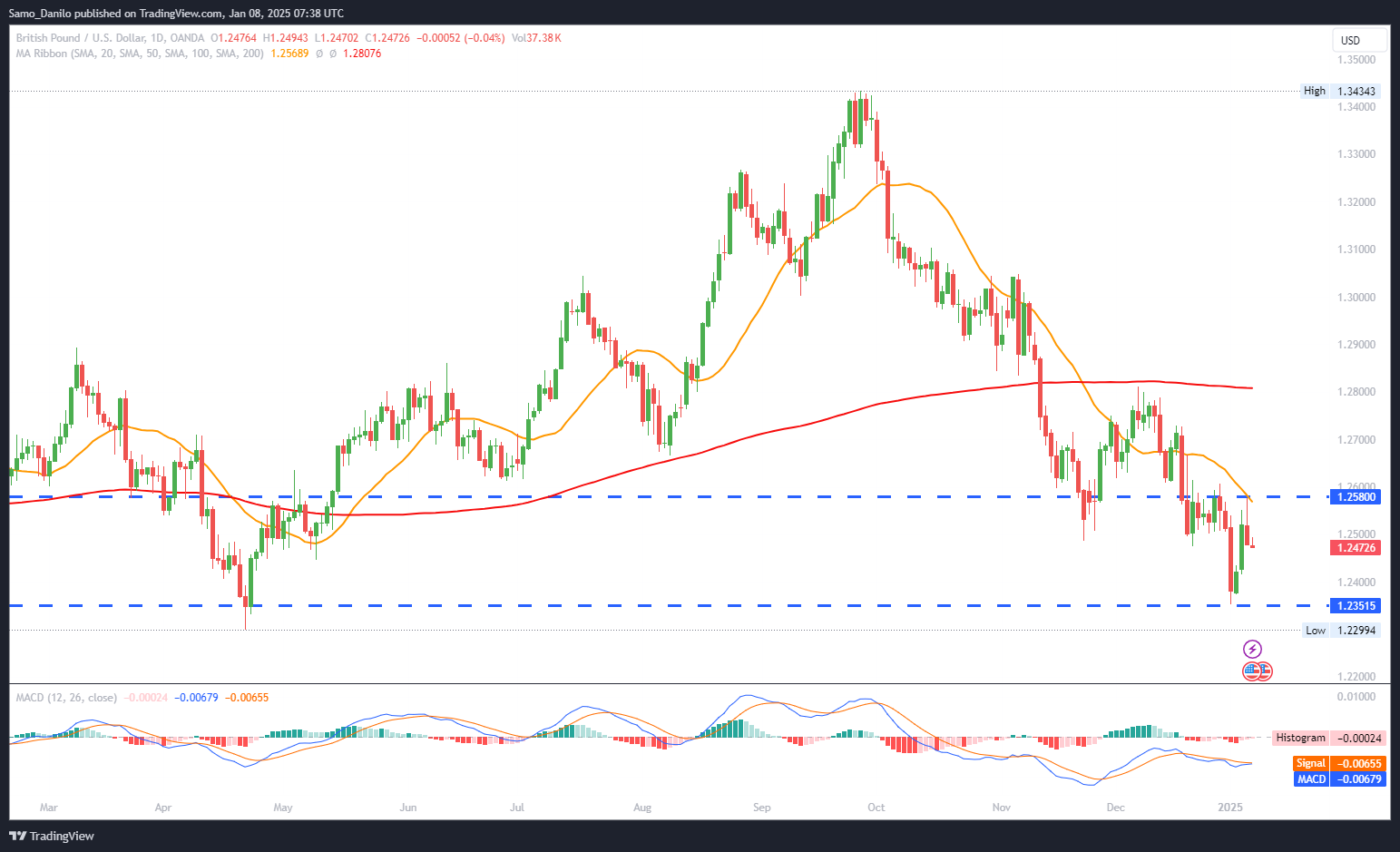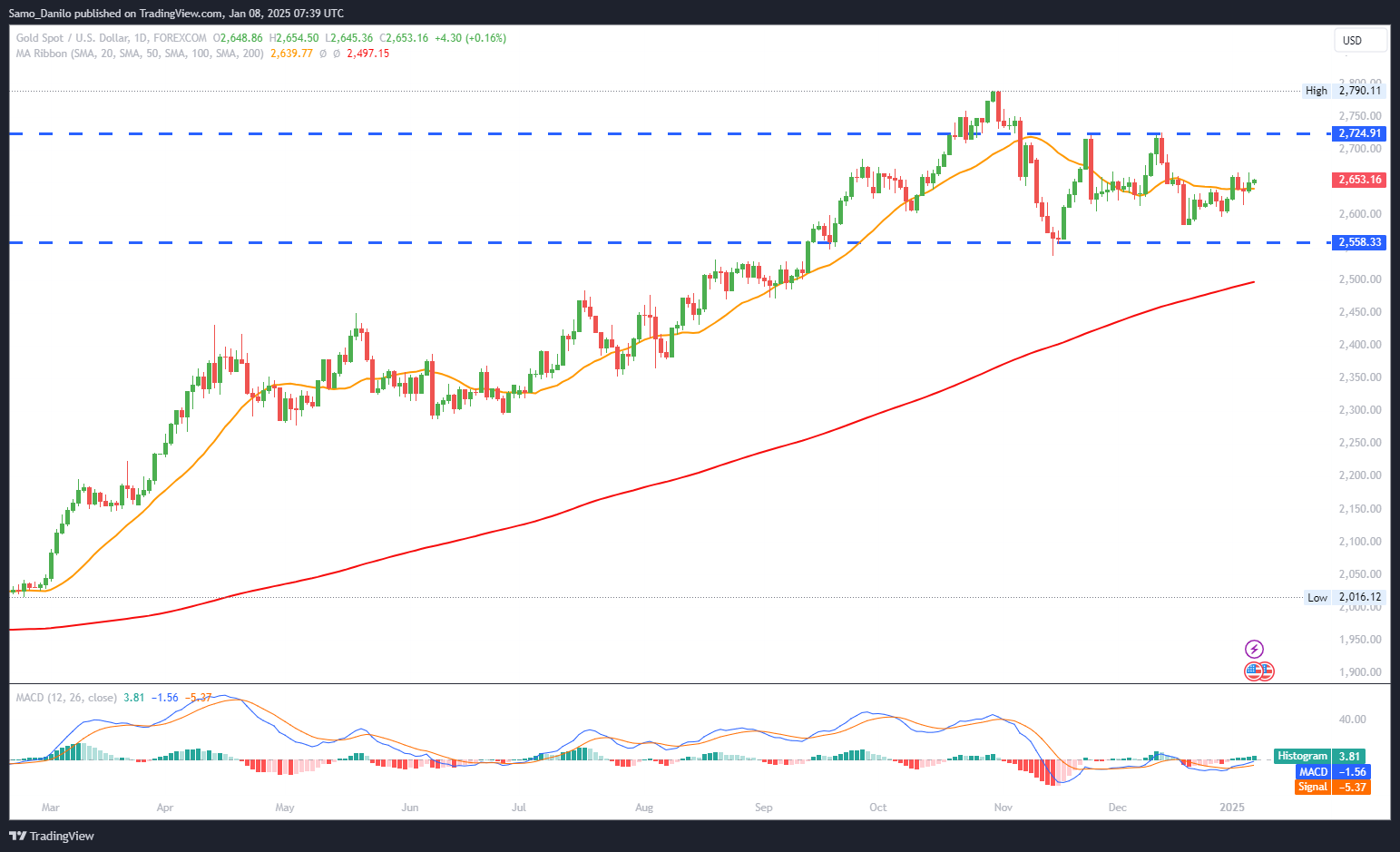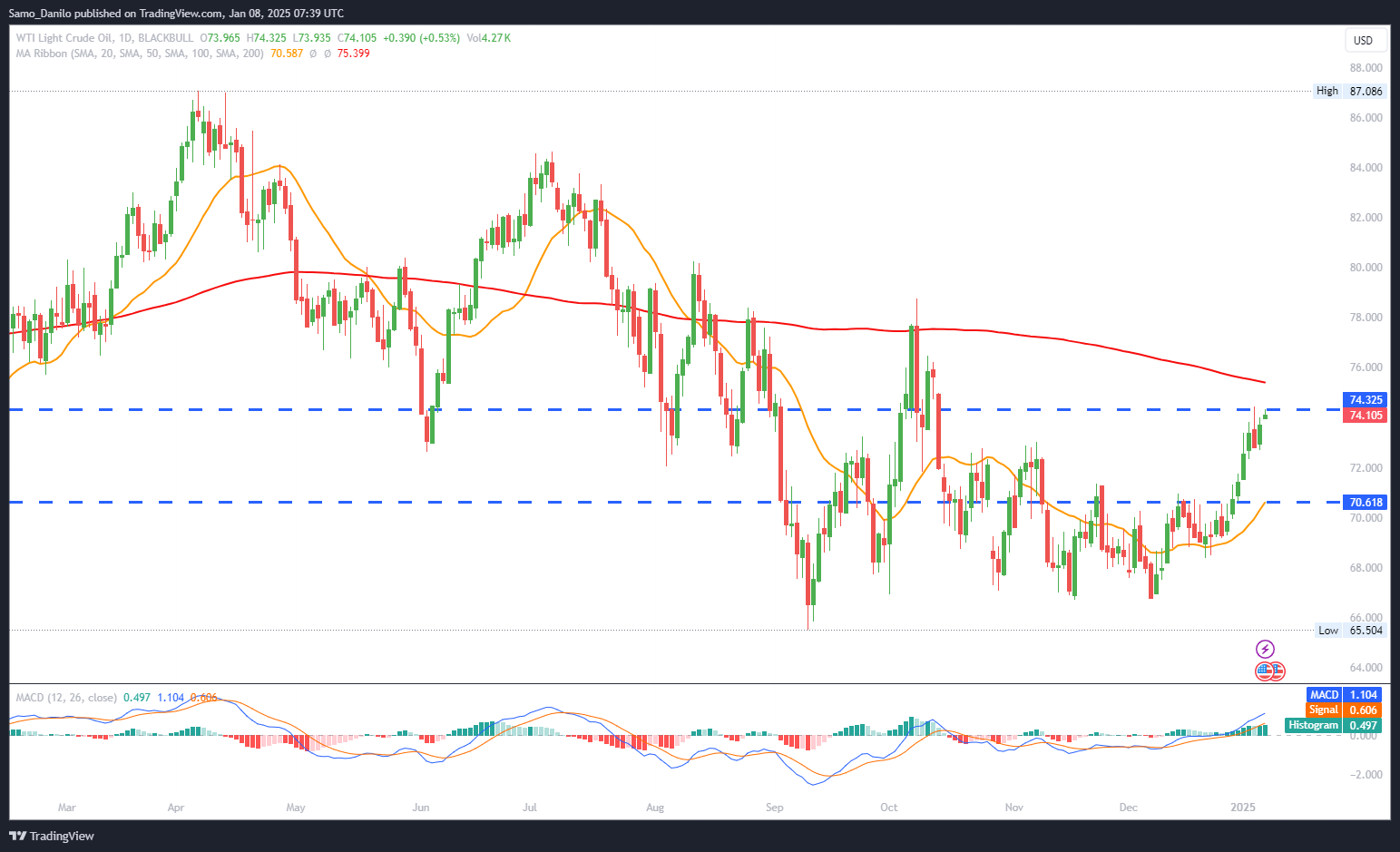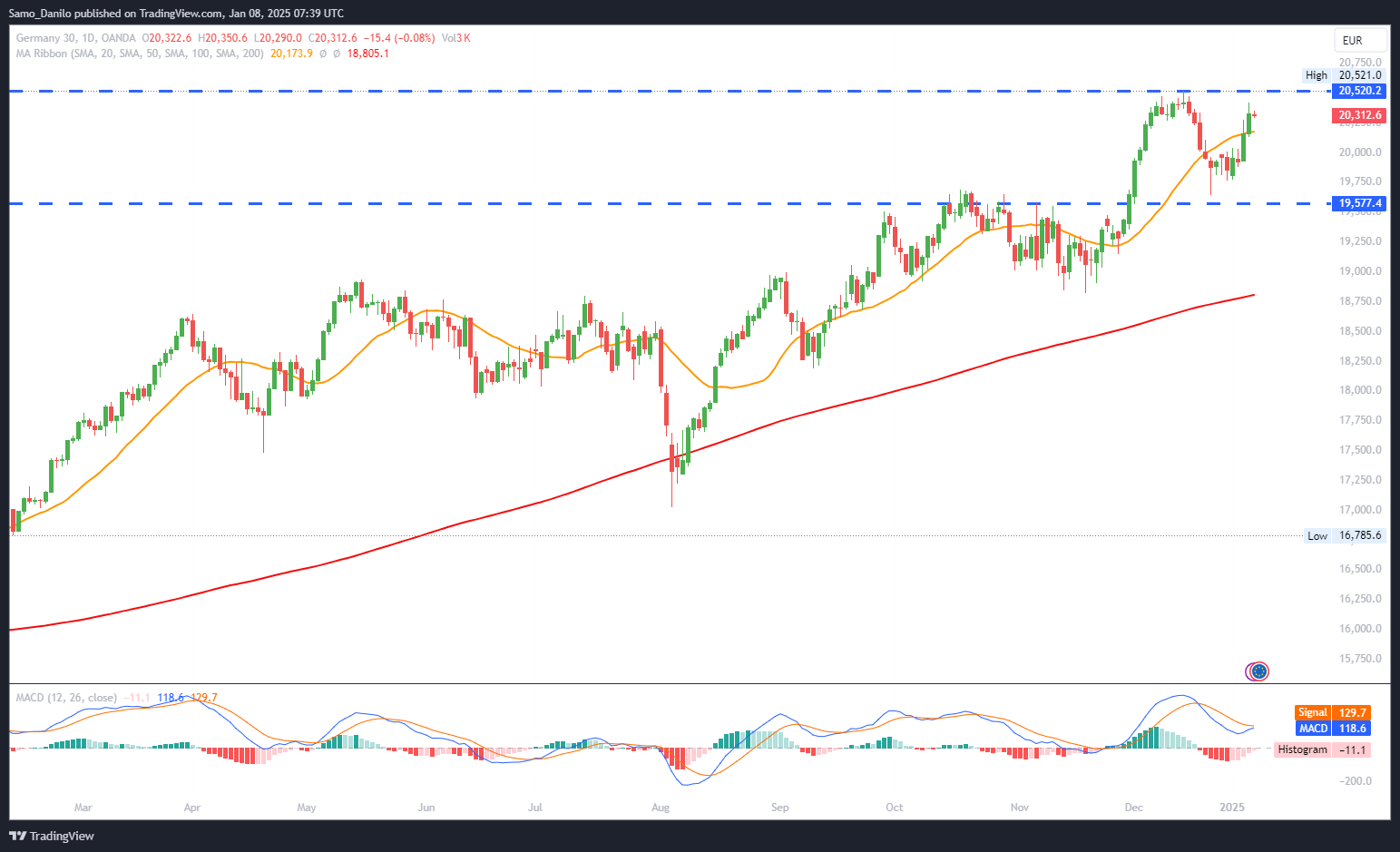EURUSD
- EUR/USD Price: The EUR/USD pair extended its upward trend during the early European session on Wednesday, approaching 1.0350. The pair benefits from broader market sentiment and favorable upcoming Eurozone data expectations.
- US PMI Data: The ISM Services PMI for December climbed to 54.1, surpassing the previous reading of 52.1, signaling robust expansion in the US services sector.
- US JOLTS Data: JOLTS Job Openings for November rose to 8.09 million, beating market expectations of 7.7 million and underscoring continued resilience in the US labor market.
- Fed Signals: Fed Governor Lisa Cook emphasized the central bank’s ability to proceed cautiously with rate cuts. She cited the sturdy labor market and persistent inflation as factors that may delay aggressive monetary easing, providing support to the US Dollar.
- Eurozone Data: Later on Wednesday, the release of the Eurozone Consumer Confidence and Producer Price Index (PPI) will be pivotal for the EUR/USD pair. Positive surprises in these indicators could bolster the Euro, driving the pair higher.
Closing statement: The EUR/USD pair benefits from improving Eurozone sentiment and upcoming data releases but remains under pressure from strong US economic indicators. A robust Eurozone PPI or Consumer Confidence report could provide additional upside momentum for the pair.
GBPUSD
- GBP/USD Price: The GBP/USD pair remains steady during Wednesday's European session after recent losses. The subdued movement reflects mixed influences from both the UK and US economic landscapes.
- Trade Deficit: The US Bureau of Economic Analysis reported a widened trade deficit of $-78.2 billion for November, compared to $-73.6 billion in October, reflecting a decline in net exports.
- Fed Signals: Federal Reserve Bank of Atlanta President Raphael Bostic expressed optimism about inflation gradually falling to the Fed’s 2% target in 2024, which continues to support the US Dollar.
- UK Retail Sales: The British Retail Consortium reported a 3.2% year-over-year increase in UK retail sales for December, the strongest growth since March 2024. This suggests some resilience in consumer spending despite broader economic challenges, providing modest support to the British Pound.
- Calendar: With no significant economic releases from the UK this week, the GBP/USD pair remains at the mercy of external factors, particularly US economic data, including the ADP National Employment report and Initial Jobless Claims figures due later this week.
Closing statement: GBP/USD remains in a consolidation phase, with modest support from improving UK retail sales data. However, the pair’s movement will likely be dictated by upcoming US labor market data, which could determine short-term directional bias.
XAUUSD
- Gold Price: Gold prices attract dip-buying following a pullback but lack bullish momentum. The $2,665 resistance zone remains a critical barrier, as traders remain cautious amid mixed market signals.
- US Labor Market: The JOLTS survey reported 8.098 million US job openings in November, exceeding both forecasts of 7.7 million and October's 7.839 million. Robust labor market data supports a stronger US Dollar, weighing on the gold price due to their inverse relationship.
- Trump’s Policy: Incoming US President Donald Trump’s proposed tariffs and protectionist measures are seen as inflationary, potentially driving higher interest rates.
- Geopolitical Tensions: Trump's comments about possible military intervention in Gaza escalate geopolitical tensions, which could bolster gold’s safe-haven appeal in the short term.
- Upcoming US Data: Investors await the ADP Employment Change data and the Federal Reserve’s Minutes release. A strong employment report or hawkish Fed tone could exert additional pressure on gold prices, while any dovish surprises may provide relief.
Closing statement: Gold prices remain range-bound as traders weigh strong US labor data against geopolitical uncertainties. Upcoming US data releases and geopolitical developments will likely set the short-term trajectory for XAU/USD.
CRUDE OIL
- WTI Price: West Texas Intermediate (WTI) edges higher, trading at $74.15 on Wednesday. Anticipation of increased crude demand from China, driven by its economic recovery efforts, provides support to oil prices.
- US Crude Inventories: The American Petroleum Institute (API) reported a 4.022 million-barrel drop in US crude oil inventories for the week ending January 3. This sharp decline indicates tightening supply, adding upward pressure to WTI prices.
- China’s Economic Measures: The National Development and Reform Commission (NDRC) introduced guidelines to enhance domestic demand and market openness in China. These efforts aim to stimulate economic growth, fueling expectations of higher energy consumption in the world's largest oil importer.
- Saudi Arabia Prices: Saudi Arabia increased its official selling prices (OSPs) for Asian customers, applying a $1.50 per barrel premium for deliveries. This move reflects strong demand in the region and reinforces bullish sentiment in the oil market.
- Key Events: Traders await the Federal Open Market Committee (FOMC) Minutes for insights into US monetary policy, which could impact energy demand. Additionally, Friday’s US December employment data will be closely monitored for its implications on crude oil prices.
Closing statement: Crude oil prices are supported by strong fundamentals, including declining US inventories, increased Chinese demand, and Saudi Arabia’s price hikes. However, market attention will focus on US economic data and FOMC insights to gauge potential headwinds for WTI in the near term.
DAX
- DAX Price: On Tuesday, the DAX rose 0.62%, adding to Monday’s 1.56% rally and closing at 20,341. Positive Euro area economic data bolstered optimism about upcoming European Central Bank (ECB) rate cuts, offsetting lingering fears over US tariff threats.
- Euro Area Inflation: December’s core inflation rate held steady at 2.7%, aligning with expectations. These figures eased concerns about inflationary pressures, reinforcing market sentiment that the ECB may continue its accommodative monetary policy with multiple rate cuts.
- German retail sales: Retail sales dropped 0.6% in November, following a 1.5% decline in October, signaling a slump in consumer spending.
- German factory orders: Factory orders plummeted by 5.4% in November after a 1.5% decrease in October, highlighting a weakening demand environment that could prompt the ECB to introduce further support measures.
- Data Ahead: Investors will monitor Eurozone consumer and economic sentiment figures later in the session. Strengthening consumer sentiment trends could hint at increased spending, potentially lifting demand-driven inflation and complicating the ECB’s policy decisions.
Closing statement: The DAX maintains its upward trajectory on hopes of ECB rate cuts, even as weak German economic data highlights vulnerabilities. Investors will closely watch Eurozone sentiment and consumption indicators to gauge the potential direction of ECB policy and the DAX.
